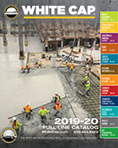A journeyman electrician’s reputation among fellow workers is often built on the quality and layout of his conduit bends. Whether using conduit benders to create a saddle, offset, or basic 90-degree bend; conduit that’s straight and square with the wall or ceiling is a level of quality everyone can appreciate. And with the popularity of interior open ceilings in today’s architectural designs, conduit layout is out there for everyone to judge.
But beauty is only skin deep. Properly bent conduit also provides a safe, efficient pathway for cables during the life of the building. And the body is more than just a steel tube. It’s part of the raceway system it’s attached to, so it needs to meet the electrical code’s strict demands. There are two additional factors that contractors must keep in mind. Jobs must be completed faster to meet the fast-track demand of construction schedules plus worker safety and health are now more important than ever.
Exact conduit location is becoming a higher priority on many commercial and residential projects. But this increased expectation of precision doesn’t mean contractors have to give up on jobsite efficiencies. They can choose the type of conduit bender that suits their project’s specific needs from manual hand conduit benders to state-of-the-art electric benders. Contractors also have a variety of accessories like bending shoes, electric benders, hand benders, hydraulic benders, hydraulic pumps, mechanical benders and pvc benders to choose from to help them stay on budget and do the job right.
Installing Conduit Correctly
Contractors looking to up their game in conduit installation should check out Guidelines for Installing Steel Conduit/Tubing published by the Steel Tubing Institute. It’s a great resource that helps contractors keep up with the current state of jobsite quality. Getting the most out of the benefits that come with meeting code requirements is everybody’s goal. Getting there depends on selecting the right product for the specific job plus good workmanship and proper maintenance during the life of the installation.
The guide includes information that enhances electrical safety by helping the installer understand how to meet the neat and workmanlike requirements. The goal of any installation is to keep future repairs to a minimum, allow for future expansion to avoid electrical overload, protect the wire conductors from mechanical abuse and preserve the electrical continuity of the raceway system.
One section is dedicated entirely to conduit benders and bending tips. It offers several key suggestions on how contractors can successfully meet the goals of a high-quality installation. Here are some of their suggestions:
- Study conduit bender manufacturers’ operating and safety instructions before using their equipment.
- Inspect the conduit bender, components and accessories to ensure they match the conduit type and size being bent. If the crew is using a power bender, make sure the pins are in the correct pin holes for the conduit size.
- Even though the National Electric Code allows up to 360 degrees between pulling points, try to layout a path using as few bends as possible with none exceeding 90 degrees. Fewer total degrees between pulling points and shallow bends combine to reduce the strain created by pulling wire.
- Before placing conduit in the bender, measure and mark a thin line completely around it so it will be visible if the conduit needs to be rotated.
The Guidelines for Installing Steel Conduit/Tubing is routinely updated to reflect National Electrical Code updates.
Doing More With Conduit Benders Upgrade
Semi-automatic bending equipment that delivers accurate, repeatable bends is quickly becoming the norm on jobsites. Contractors can expect greater efficiency and quality by upgrading their bending with electric and hydraulic equipment. Units like the Greenlee 854DX Conduit Benders are fast and easy to set up for a wide range of conduits with one shoe bends for 1/2″ to 2″ EMT, IMC and RIGID conduit. The 854DX also eliminates guesswork with an absolute encoder that halts bending at exact angles. And the digital pendant can be used to set angles and monitor progress so operators can focus on doing high quality work. It’s durable, uses solid state electronics to minimize down time and is rated for more than one million bends.
But for contractors who want even more productivity, Greenlee offers a Shotgun Shoe Group that’s compatible with Greenlee 854DX electric benders. Operators can bend as many as four pieces of conduit simultaneously. The additional bending capacity can increase job site productivity often by 200%. It’s also very versatile, offering a 1 shoe bend for 8 conduit types: Rigid 1/2″, 3/4″, 1″; IMC 1/2″, 3/4″, 1″; and EMT 3/4″, 1″.

Linking Designers To Contractors
The use of Building Information Modeling (BIM) is rapidly changing how contractors and design professionals work together. Originally, BIM was used as a design tool that helped architects accurately detect potential interference problems in designs. But in recent years, BIM programs have evolved to calculate accurate order quantities of products (like electrical conduit) required on projects.
BendWorks® is an add-in software application architects can add to their design programs such as Autodesk® Revit® and Revit® MEP. Greenlee developed the software to help designers optimize electrical conduit runs, save time, increase efficiency and reduce costs. It helps coordinate field work with design by combining electrical trade knowledge and Greenlee® bending parameters to help designers be sure that all conduit runs are error-free. When the drawing is approved, the architect simply exports the inventory requirements to the contractor and each bend is ready for prefabrication or on-site bending with most Greenlee conduit benders.
Using BIM with Bendworks is a smarter and faster way of doing business. It effectively minimizes errors, rework and change orders between designer and contractor.
Using Prefabricated Conduit
Another growing trend (especially with contractors working with BIM generated drawing) is prefabrication. By creating conduit in their shops, contractors can do a better job of maintaining conduit production schedules, controlling inventory and increasing labor efficiency.
Conduit manufacturers have created several tools to help contractors shift their work from field to shop. Some, like Greenlee, offer special benders that are designed to coordinate the information generated by the BIM data directly into production. Their recently introduced AUTOBEND 3D SMART BENDER helps reduce scrap and increases productivity. It’s also compatible with Autodesk Revit and Greenlee BendWorks™ software.
Contractors can use bent conduit carts to help coordinate the delivery of prefabricated conduit to the job site. The wheeled carts eliminate pallet use and reduce waste handling time on the jobsite. They feature easily adjustable arms to accommodate various conduit offsets – and after unloading, they fold and stack for easy shipping back to the shop.
Letting An App Do The Work
There’s no need to bring paper charts or manuals for conduit bending reference anymore. Contractors can just download QuickBend: Conduit Bending to their phone or notepad. It’s a fast and accurate conduit bending calculator app with visual displays that are appealing and innovative. The app gives contractors accurate measurements using the Centerline Radius Algorithm. The Centerline Radius Algorithm is especially useful when bending larger than 1″ Conduit and bends that exceed 30˚.
App users can select between different types of benders and choose the size of the shoe and conduit type they plan to use. Users view their bender’s information (centerline radius, deduct, gain, setback, travel and radius adjustment) within the Bender Specs section.
QuickBend provides layout information contractors can use with many of the bender manufacturers. The measurements are used to fabricate the common bends used in installation, such as offset; parallel offset, three-point saddle, and four-point saddle.
Contractors can purchase the app at the Apple Store.
![]()
Check out these links for more information on conduit and bending:
Steel Tube Institute
https://steeltubeinstitute.org/steel-conduit/




